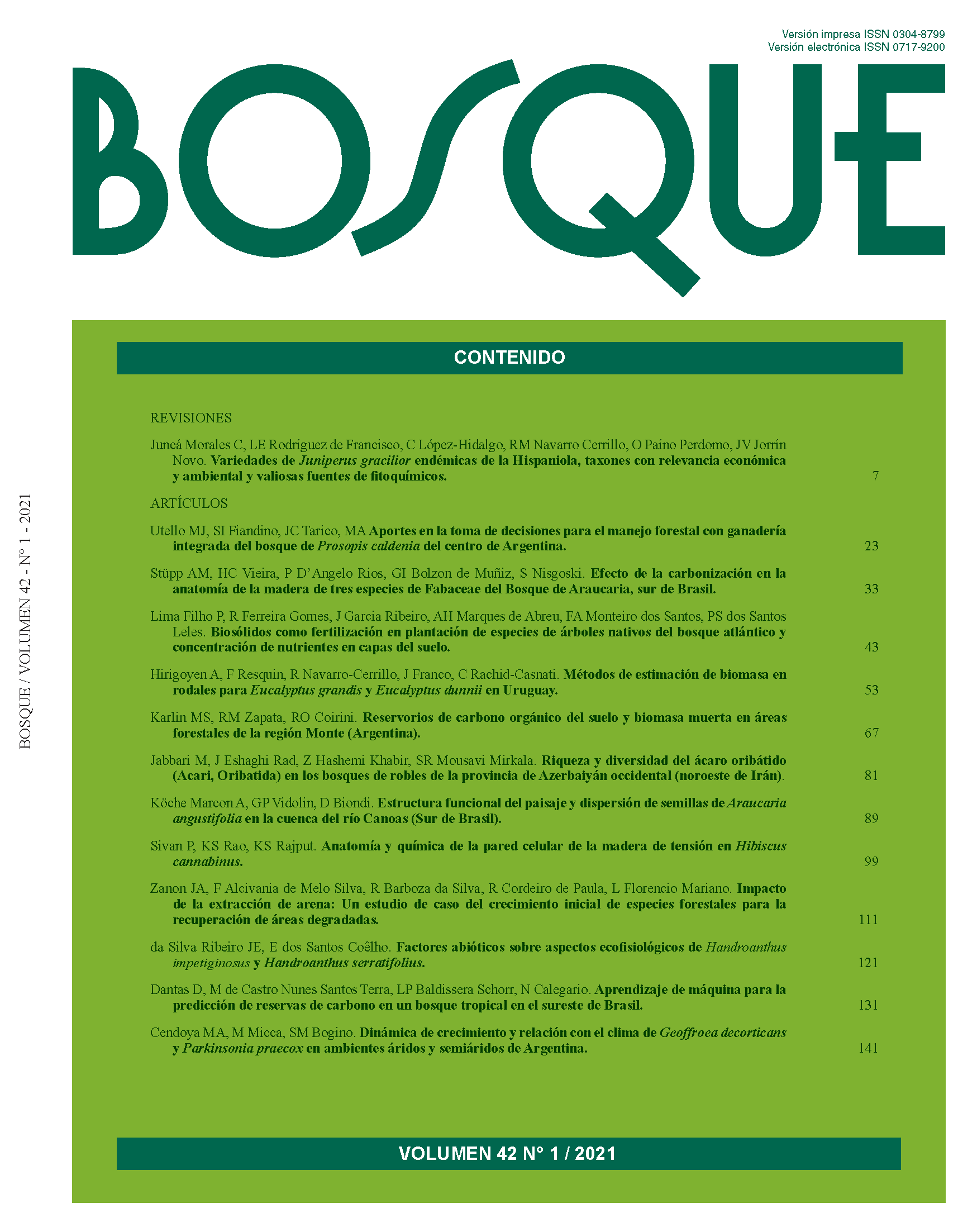Dinámica de crecimiento y relación con el clima de Geoffroea decorticans y Parkinsonia praecox en ambientes áridos y semiáridos de Argentina
Contenido principal del artículo
Resumen
Los ambientes áridos y semiáridos dominan la superficie terrestre y son muy vulnerables en el contexto actual del cambio global. El chañar (Geoffroea decorticans) y la brea (Parkinsonia praecox) son especies que crecen en estos ambientes en bosques degradados, en áreas severamente transformadas o bien como componentes secundarios de los bosques maduros. A pesar de la importancia de ambas especies poco se conoce sobre su dinámica de crecimiento y su relación con el clima. El objetivo de este trabajo fue: determinar el potencial dendrocronológico y el vínculo entre el crecimiento y las variables climáticas de ambas especies. Se aplicaron métodos anatómicos y dendrocronológicos estándares. En primer lugar, establecimos las características anatómicas que nos permitieron detectar los límites de los anillos de crecimiento de los árboles. En segundo lugar, determinamos una correlación significativa entre las series, lo que significa una señal de crecimiento común entre los árboles como resultado de los efectos de las variables ambientales. Las series medidas en ambas especies permitieron estimar correlaciones significativas que demuestran una señal común de crecimiento ambiental. El crecimiento radial medio para ambas especies fue de 3,37 (DS±0,71) y 2,16 (DS±0,61) respectivamente. La longevidad no superó los 40 años. Por último, el crecimiento de chañar y brea tuvieron una asociación inversa con la temperatura media. La precipitación afectó los crecimientos de chañar en el verano y de la brea en la estación previa al crecimiento. El IOS (Índice de Oscillation Sur) tuvo una asociación inversa con el crecimiento de la brea. Esto implica, en el caso de la brea, una asociación significativa con variables climáticas locales (temperatura y lluvia) y globales (IOS). Estos resultados señalaron por primera vez la dinámica de crecimiento de ambas especies y su valor para estudios dendroclimatológicos.

